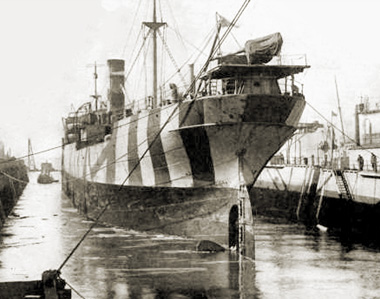 |
| Photograph of Rockwell Kent (c1920) at Wikipedia Commons |
In 1903, Kent spent the summer as an apprentice to Abbott H. Thayer, while living at the Thayers’ home in Dublin NH. At the time, Thayer and his son Gerald were preparing a large pioneering book on animal camouflage, titled Concealing Coloration in the Animal Kingdom (1909, reprinted 1918). Kent contributed to the book by working with Gerald and his stepmother Emma on a painting of a copperhead snake in a woodland setting.
Later, in 1909, Kent married Thayer’s niece, Kathleen Whiting, but that unfortunate partnership crashed in 1926, largely because of Kent’s repeated infidelities.
Below is an Associated Press news article that appeared in The Lowell Sun (Lowell MA), on February 7, 1941, p. 1—
ROCKWELL KENT HITS US POLICY. Says Camouflage Artists Should Be Paid Higher Wages.
Boston, Feb 7 (AP)—Artist Rockwell Kent, describing the art of camouflage as one of the essential phases of military defense, said today the government was making a serious mistake by paying what he said were “charity labor” wages for camouflage artists.
WPA artists, he asserted in an interview, were being paid only $22.50 a week on projects to make factories, ships and other military objects “look like what they’re not” in case of war. He questioned whether this was wise.
“Most of the rest of our defense is being produced under the best labor conditions—why skimp here?” he asked.
Known chiefly for his woodcut drawings and as an author, Kent said he spoke as head of the United American Artists branch of the Office and Professional Workers Union (CIO).
“Because of the effect of color and pattern on vision,” he said, “camouflage is an essential part of the survival of the fittest.”
“The late Abbott Thayer, who originated the idea of painting wild stripes on ocean vessels to deceive submarines, laid down the principle that if you can’t make objects invisible, make them look like what they’re not.
Naturally, it requires a specialist’s training and years of learning for artists. I was discovered by artists and can be understood only by artists. Yet the government is paying charity labor wages for work on this phase of our defense, instead of paying adequate scales and thus granting recognition of those artists whose work has become essential.”
Kent said his union would work to alter the situation.
“We will soon offer a plan which we hope will result in artists receiving the recognition they achieved in the first World War. There was no relief then, yet men of high standing were employed to design camouflage.”













































